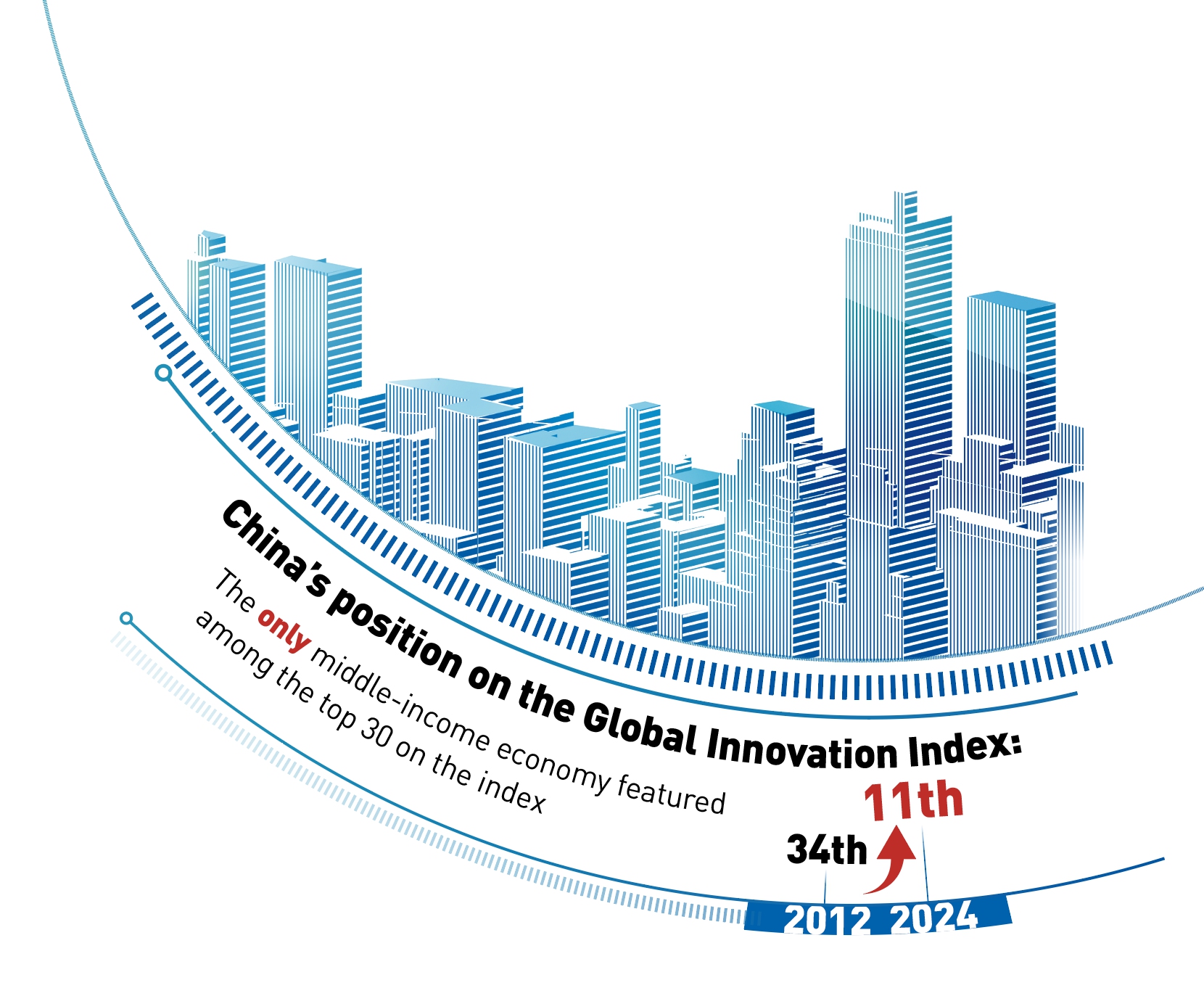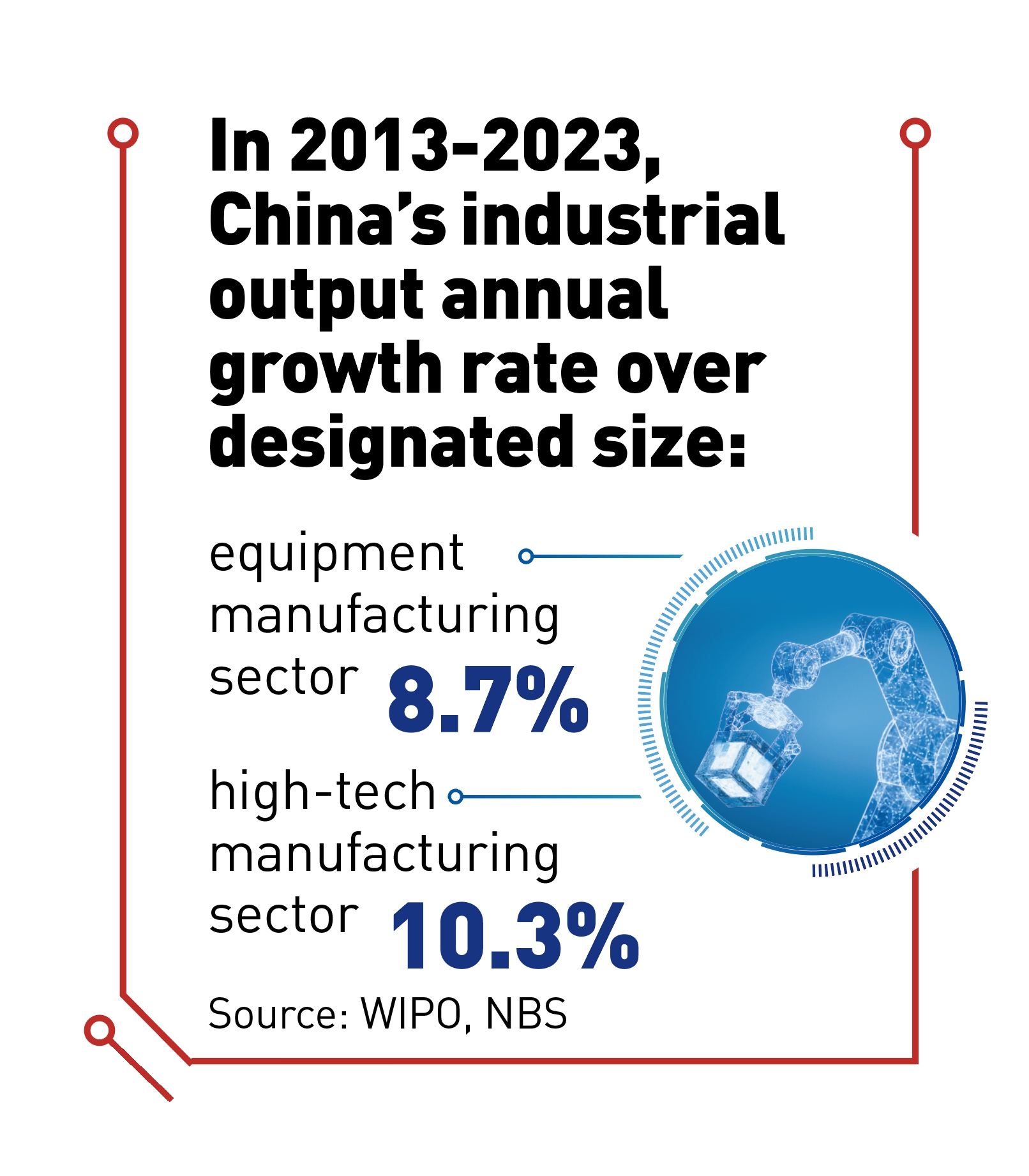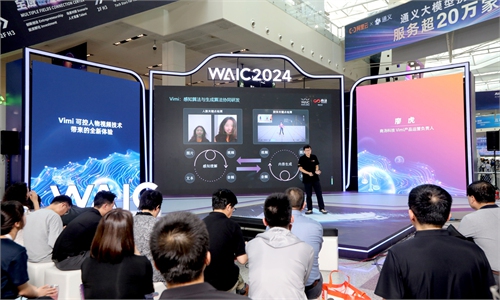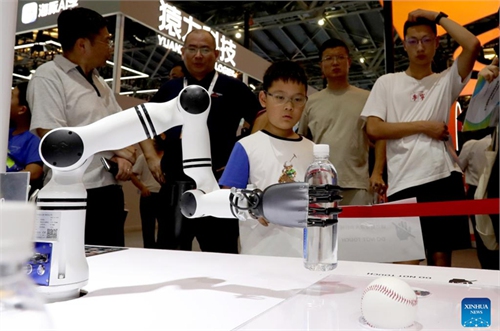Exploring life of a Chinese powered by AI
75 years on, China emerges from a follower en route to becoming a major global tech powerhouse

Photo: VCG
A white collar worker surnamed Wang in her 20s, based in Wuhan, Central China's Hubei Province, starts her day by waking up and sitting before a made-in-China "magical mirror" or a mirror device powered by domestically developed artificial intelligence (AI) technology that scans her face and analyzes her health condition in real-time.
After breakfast, she hails a Robotaxis from Apollo Go, Baidu's autonomous ride-hailing platform, gets in the taxi and immediately opens a Huawei laptop embedded with AI assistant, to prepare for her work. Her work schedule and a brief PowerPoint for her upcoming meetings are in place by the time she arrives at the office. So she immediately holds several quick meetings with her colleagues, with meeting minutes automatically generated by AI chatbot Kimi, developed by Chinese start-up Moonshot AI.
In the afternoon, Wang heads to a foreign company to discuss a potential partnership with the firm's foreign CEO, during which iFlytek's AI-powered translator provides real-time translation and makes the communication very efficient. She also tours the company's intelligent factory and is wooed by a number of Chinese-made humanoid "quality inspector" robots patrolling the plant.
The widespread use of AI is also penetrating Wang's leisure time as she plays the market-hit Chinese video game Black Myth: Wukong at night before going to bed. The blockbuster game has been applauded for the groundbreaking application of AI to enhance the behaviors of non-player characters (NPCs).
The daily routine of Wang, who is at the forefront of interacting with AI technology, epitomizes how the fast-lane development of AI technology, among other homegrown technological innovations, has been notably transforming every aspect of an ordinary Chinese and how the country has been marching forward toward tech modernization with robust steps. It also represents one of the startling breakthroughs in China's drive toward sci-tech self-reliance - a progress made in a very short period of time.

Graphic
October 1 marks the 75th anniversary of the founding of PRC. Back to 75 years ago, China was a nascent player in technological endeavors, with scientific and technological foundation close to naught. However, in the past 75 years, China has made a huge leap forward in the technological field, emerging from a laggard, a follower to a pioneering force en route to becoming a major global technological powerhouse.Industry insiders said that the steady emergence of scientific and technological innovation achievements is largely attributed to the innovation-driven development strategy advocated by the country's leadership, its capacity to devise a systematic, holistic and coordinated approach and the national innovation system that rallies top-down efforts toward a common goal.
China's steady steps made in technological modernization in the past years also offer a vivid manifestation of the connotation of Chinese modernization, which - according to industry insiders - is a unique path that practices the concept of open, fair, just and non-discriminatory cooperation in sci-tech, in stark contrast to Western technological hegemony, while presenting a viable alternative of technological cooperation for developing countries, particularly those in the Global South.
Profound transformation
"On the technological front, China has been catching up at an extremely rapid pace, moving from being a follower to be on par with global leaders step by step. This shift in recent years has been particularly evident with the rise of China-developed large AI models, which has helped foster a unique economic development model that is driven by new quality productive forces," Zhou Hongyi, founder and chairman of 360 Security Technology, told the Global Times.
Maya Majueran, director of Belt & Road Initiative Sri Lanka, said that the key to China's technological climb-up lies in the CPC leadership's innovation-driven development strategy. "It concentrates the nation's innovation resources around strategic priorities and focuses on fostering a culture that spurs science and technological innovation," he said.

Graphic
China's sci-tech modernization and innovation has played a vital and pillar role in pursuing Chinese modernization and high-quality development.China's technological roadmap is a path of independent innovation with Chinese characteristics. While certain Western countries are erecting technological barriers with "decoupling" and "de-risking" push, China, on the contrary, is spearheading an open course for global cooperation and building bridges for tech know-how transfer, Wang Yiwei, professor of the School of International Studies at the Renmin University of China, told the Global Times.
China's technological modernization encapsulates the longing of developing countries to build a new global order, under which the benefits of technological advancement should be shared equally rather than being monopolized by the developed countries, analysts said.




